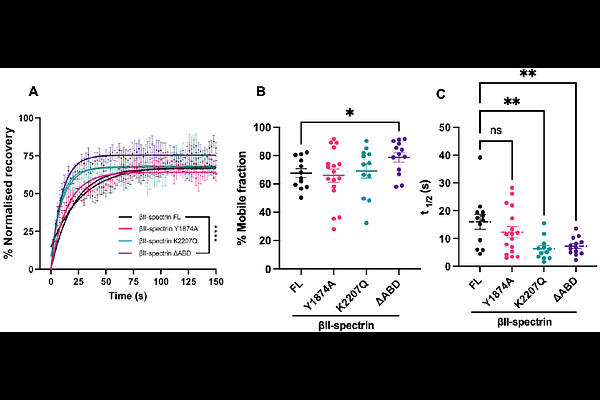Initiation and maturation of the early axonal βII-spectrin membrane-associated periodic skeleton requires active cytoskeletal remodelling

Initiation and maturation of the early axonal βII-spectrin membrane-associated periodic skeleton requires active cytoskeletal remodelling
Bodas, S.; Mishra, A.; Pullarkat, P.; Ghose, A.
AbstractThe axonal membrane-associated periodic skeletal (MPS) consisting of evenly spaced F-actin rings crosslinked by spectrin heterotetramers has been observed in many neuronal subtypes across multiple species. The MPS has been implicated in a diversity of functions ranging from a load-bearing tension buffer to a periodic ruler positioning channels and signalling complexes. However, the initiation and early development of the axonal MPS are poorly understood. Using superresolution imaging of embryonic dorsal root ganglion axons, we show that the early development of the {beta}II-spectrin MPS involves recruitment and stabilisation of the {beta}II-spectrin to the axonal cortex followed by progressive establishment of long-range periodic order. Microtubule dynamics are essential for MPS formation in the early stages, while microtubules have a passive stabilizing function in the mature MPS. We show that the early subplasmalemmal recruitment and confinement of {beta}II-spectrin is dependent on cortical actin. Further, active nucleation of F-actin is required in early development but dispensable for the maintenance of the mature MPS. Finally, using a {beta}II-spectrin knockout model, we demonstrate that the actin-binding and lipid interacting domains of {beta}II-spectrin are critical for its subplasmalemmal confinement and, subsequently, MPS maturation. Our study provides insights into the mechanisms governing the development and maturation of the axonal MPS, highlighting the critical role of cytoskeletal dynamics.